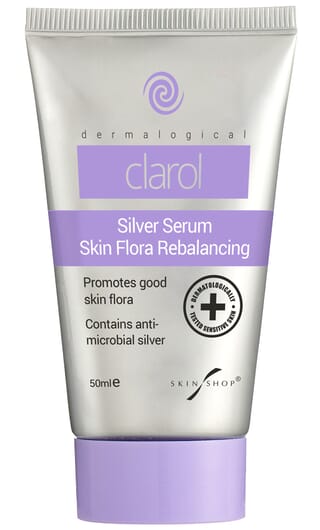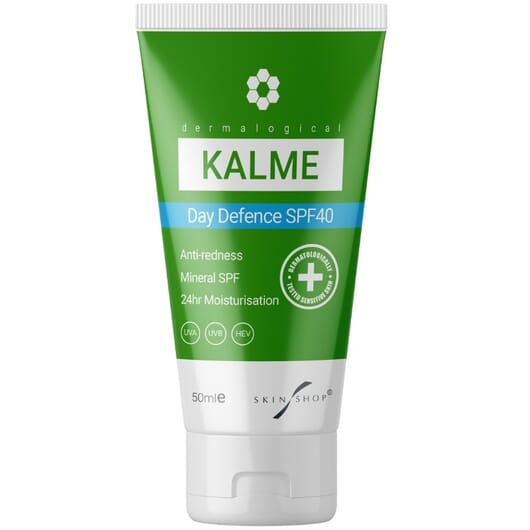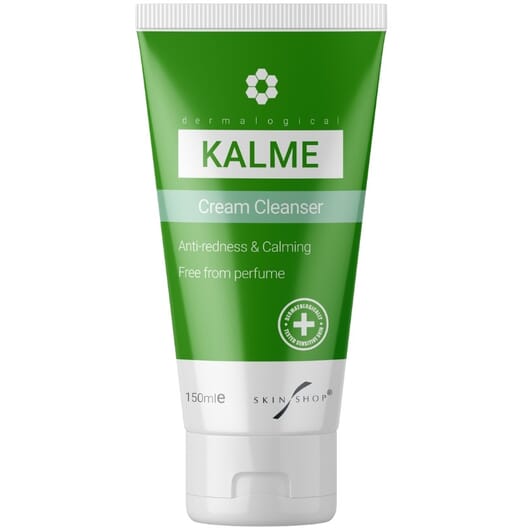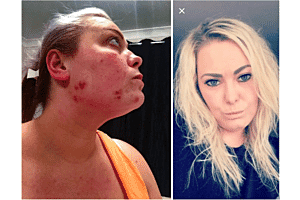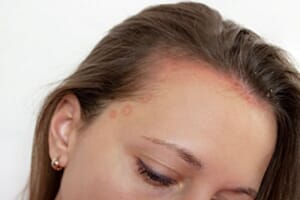A groundbreaking new study (1) has discovered a direct link between improved skin quality and better mental wellbeing, measured via levels of good skin bacteria.
The bacterial ‘landscape’ of skin is known as the skin’s microbiome, which varies across different parts of the body such as the face, scalp, genitals and underarms, and can influence our health in many ways.
The human microbiome comprises approximately 10 trillion microorganisms that live on (skin microbiome) and inside (gut and oral microbiome) the human body.

A wealth of research has shown that bacteria in the gut can affect psychological wellbeing, but the new research is some of the first conclusive evidence that the balance of bacteria on the skin can also play a significant role in improving mental wellbeing, including levels of stress, sleep quality and general mood indicating a direct link between the brain and skin quality.

The new study examined skin from the face, scalp, underarm and forearm of over 50 participants. The study found that higher levels of a beneficial strain of the skin bacteria Cutibacterium, which is important for building and maintaining skin barrier function, was directly linked to improved mental health and better sleep. Cutibacterium bacteria showed consistent associations with psychological wellbeing across multiple body locations but its presence in higher levels on the face was the area most effectively linked to reduced stress.
While areas like the forehead are dominated by Cutibacterium, moist areas such as the armpits and genital folds are dominated by the bacteria Staphylococci, which help modulate the innate immune response.

The new study adds to a growing back of evidence of a direct relationship between psychological wellbeing and the human microbiome although the role of skin microbiome has been largely unexplored until now.
The reasons behind the skin’s link to mental health could be due to both physical and psychological factors.
The skin serves as the body’s physical barrier, protecting it against water loss and environmental stressors. The more robust the skin is, which is directly linked to higher levels of good skin bacteria, the more protection against water loss and external aggressors and disruptors it provides.
However psychological factors, such as stress, anxiety and depression, have been shown to influence skin health and function via the hypothalamic–pituitary–adrenal axis.
This new study sheds further light on a bidirectional link between the skin and the brain, whereby in one direction the brain can modulate skin condition and function via neurohormonal signalling while in the other direction skin condition can be sensed by the brain via tactile stimulation such as itching and inflammation.

There’s also growing evidence that changes in the composition and diversity of the skin microbiome due to varying factors including medications, hormonal disruption and contraceptives and chemicals in many skincare products are associated with an increased risk various skin disorders, including acne, atopic dermatitis and rosacea as well as dandruff and atopic skin.
5 ways to increase good skin bacteria:
“Good skin bacteria are more fragile than bad skin bacteria in all skin and typically as we age the good bacteria depletes and becomes even more fragile. Taking steps to increase levels of good skin bacteria can have a direct impact on both the physical condition of the skin as well as other health parameters. The psychological link to improved skin quality is something many dermatologists have long suspected but in terms of scientific research is still largely unproven. This study is an exciting indication that there may be a proven link and will hopefully open a door to more research and new therapeutic treatments,” says Dermatologist Dr Eva Melegh.
Dr Meleg gives 5 tips on how to increase levels of good skin bacteria;
Switch to water-free cleansing
Like the stomach our skin contains good and bad bacteria. It’s the bad bacteria that can lead to inflammation and acne. However, it’s the good bacteria that protects and maintains the skin barrier, which is what keeps bad bacteria out and also locks in moisture and prevents dryness.
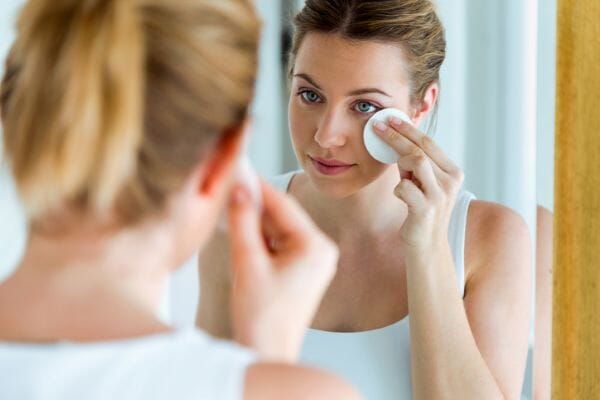
Most facial washes contain anti-bacterial agents aimed at killing off harmful bacteria. However, this bacterial ‘wipe out’ approach also kills off good bacteria too. This can lead to problems for all skin types, but especially skin prone to rosacea, acne and eczema.
The best way to clean skin while not compromising bacterial balance is via a gentle water-free cream cleanser with moisturising agents. Try Kalme Water-Free Cream Cleanser, which is designed to clean skin and calm down inflammation without using water or anti-bacterial agents.
Feed good skin bacteria daily
Somm modern skincare products contain ingredients called prebiotic that feeding good bacteria. This is one of the most effective way to increase levels of good bacteria on the skin. Try Clarol Silver Serum which contains a silver ingredient that feeds good skim bacteria while being repellent to bad skin bacteria. Used daily it can quickly alter the bacterial balance of the skin towards an abundance of good skin bacteria.
Use an alternative to makeup remover
Most make up removers contain solvents designed to break down the components in cosmetics to remove them. The problem is these solvents also break down and remove good skin bacteria. Using a natural skin oil such as rose hip oil, argan oil or coconut oil to loosen cosmetics and then using a gentle clarifying toner to then remove the residue is a much gentler way to remove make up without compromising good skin bacteria. Try Clarol Birch Water Pore-Minimising Toner to remove excess residue without solvents and help tighten gaping pores.
Apply a daily mineral SPF
Sunburn and UV damage retards good skin bacteria growth as it causes inflammation and dryness to skin. Wearing an SPF daily can help safeguard good skin bacteria levels.

Mineral SPF’s offer a physical block against UV damage and zinc oxide in particular also has an anti-inflammatory effect which has an added protective factor for good skin bacteria. Try Kalme Day Defence SPF40, which has a pure micronized zinc oxide SPF plus anti-inflammatory antioxidants and anti-redness ingredients.
Keep sebum pure
Sebum is the skin’s most protective agents and help maintain healthier levels of good skin bacteria. However excess sebum can also harbour bad skin bacteria which can turn some strains of good skin bacteria such as Cutibacterium, pathogenic, which if allowed to build up can quickly multiply, leading to inflammation, infection and acne. The answer is not to try and reduce sebum or dry it up as this can damage good skin bacteria production, but to keep the sebum free from contamination with exterior bacteria. New skincare products containing sebum purifying agents help sebum flow out cleanly through the skin’s pore by repelling the build up of contaminating bad bacteria. Try Clarol Sebopure which contains a patented sebum preserver called Pixalia, made from wild mustard leaf extract.
Ref:
1. British Journal of Dermatology, Volume 193, Issue Supplement_2, October 2025, Pages ii6–ii14




